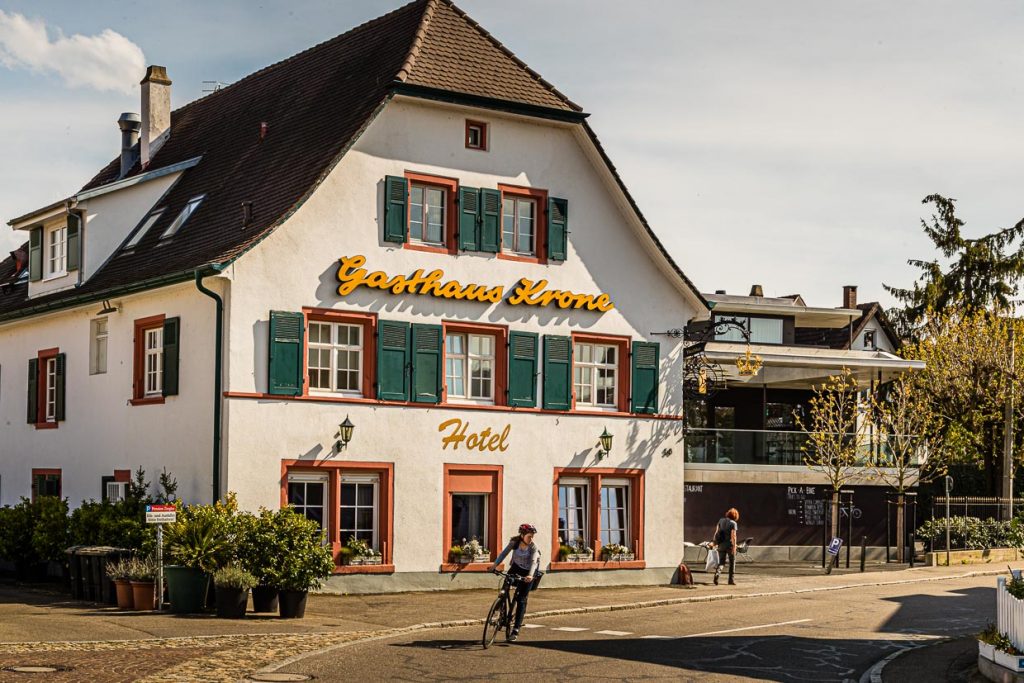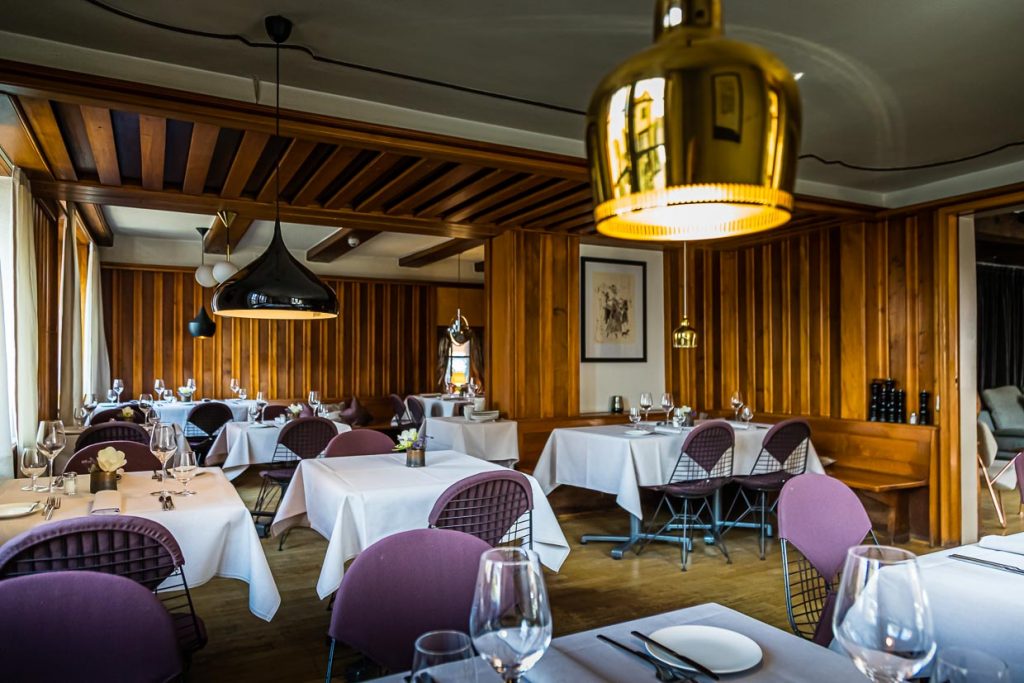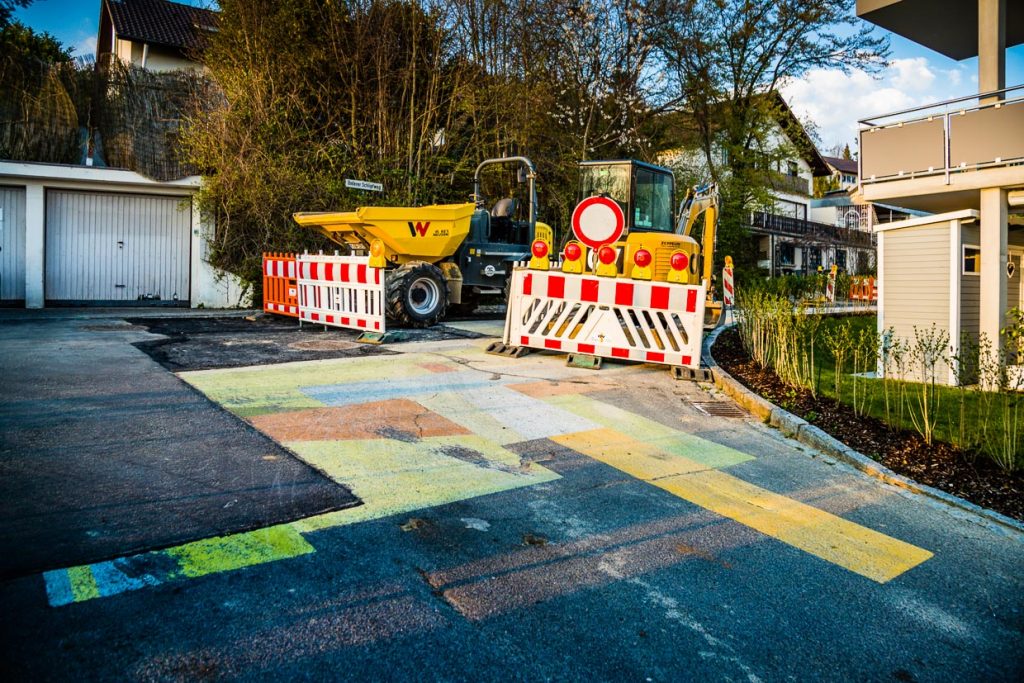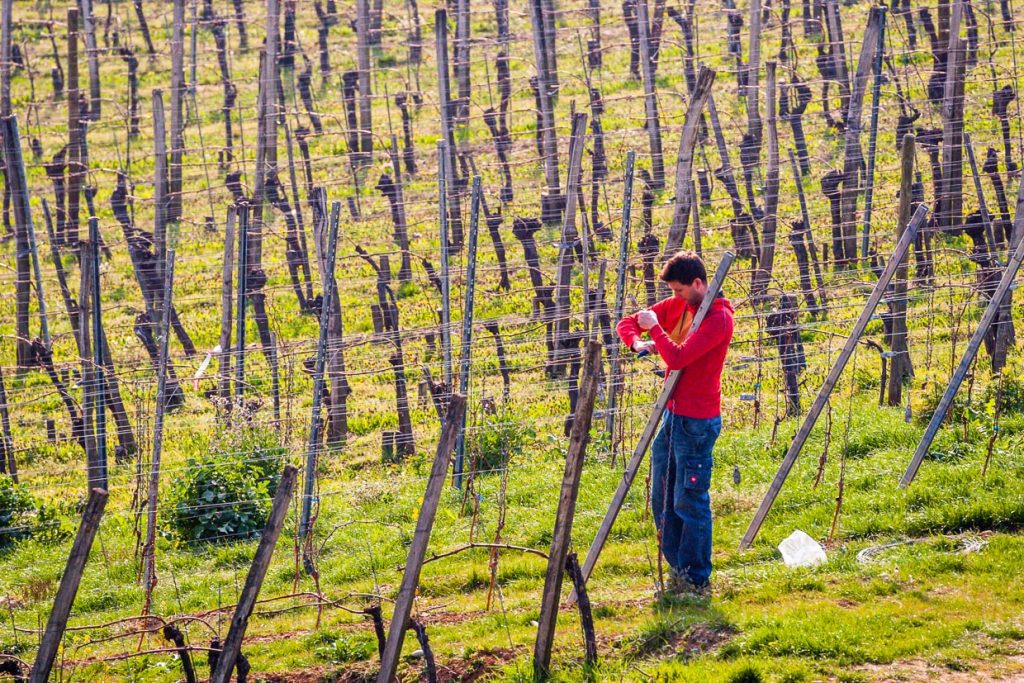Staying like friends – that is the credo of hotel manager Sonja Hechler. With great attention to detail, she has transformed the Gasthaus Krone, which dates back to 1572, from a house with a gastronomic focus into a boutique hotel that stands out for its beautiful interior designs as well as for its surprising breaks between tradition and modernity. Renowned designers such as Konstantin Grcic and Jasper Morrison stay here, as do art patrons and internationally renowned architects. The Hotel Krone is perfectly located between Basel, the Fondation Beyeler with its often top-class exhibitions and the Vitra Campus in Weil. All of them worth seeing destinations that can be experienced by bike or hiked from the Hotel Krone. This is even possible along an art trail. The Rehberger Trail with 24 objects by artist Tobias Rehberger links two countries, two communities and two cultural institutions over a length of only five kilometers, and in the middle of it all stands the Krone Inn.

More than 400 years ago, the Gasthaus Krone received the first liquor license in Weil am Rhein. From time immemorial, the house has been a contact point for a colorful public. For about 70 years, it has been run by the Hechler family. Thanks to its location on the border with Switzerland, the “Basel dough” has always liked to move here, as Sonja Hechler tells us. Everything of distinction, from pharmaceutical entrepreneurs to art patrons, came and still comes to the Hotel Krone with pleasure. In the past, the only thing that attracted guests was the good food.

Father Roland Hechler cooked his way to a Michelin star when he was young. Today, he is exclusively at the stove on weekends, preparing his classics such as soup meat and Sunday roast. The restaurant, which has been downsized to 30 seats, has been running with a new concept since 2018. Chef Sebastian Urban provides modern and regional cuisine, but likes to think outside the box. The Outside the Box concept temporarily picks up on themes such as French cuisine, ART or asparagus.

How Vitra works – worlds for design fans
A stay at the Hotel Krone also encourages thought experiments for one’s own home. Whether in the restaurant, in the Living Room and even more so in your own room, as a guest you are surrounded by so many homely arranged design classics and design furniture of the present that the effect of these pieces is much more inspiring than would ever be possible in a sales room. Where else do you have the opportunity to spend an entire evening sitting on an Eames chair from Vitra and determine what you’ve always wanted to know. Are these chairs actually comfortable or do they just look good? The seating comfort is excellent. Mr. and Mrs. Eames, sorry, how could I doubt you!

Main house and new building – designing an environment
Hotel Krone has a total of 17 design rooms. Twelve of them are located in the historic inn and five in the new building. Natural materials were used in the new rooms to ensure a healthy indoor climate, says Sonja Hechler. The best beds, adobe walls and purist, timeless design. In the rooms in the historic main house, the style of an old half-timbered house was not only retained, but deliberately brought out. The wooden beams have been exposed and painted. They contrast with the design classics by Charles and Ray Eames, Jean Prouvé or Isamu Noguchi, which are comparatively young at around 60 years old. Today, Eames descendants stay at the Hotel Krone, as do the extended family of star architect Balkrishna Doshi or designers Konstantin Grcic and Jasper Morrison.


Objects of desire in the city of chairs
It’s spring and they’re celebrating the Cherry Blossom Festival. Loosely distributed on the Vitra Campus are an unmanageable number of objects of desire. Here a Grcic, there a Morrison, Panton Juniors for the little ones and an enclosure full of Eames Elephants. Very casual this atmosphere that the company Vitra has created around its production site in Weil am Rhein since the 1950s. The buildings designed by star architects such as Frank Gehry, Zaha Hadid, Alvaro Siza or Herzog & de Meuron. Even the bus stop on campus is a design by Jasper Morrison.




The newest building on campus – the Vitra Schaudepot
From the outside, a plain brick building, with the shape of the pictogram for house. From the inside, the Schaudepot presents key objects from an extensive collection. 20,000 objects, including 7,000 pieces of furniture, over 1,000 lamps as well as numerous archives and the estates of Verner Panton and Alexander Girard are gathered here. A selection is always available to visitors, focusing on around 400 objects of modern furniture design from 1800 to the present day. These include Le Corbusier, Alvar Aalto and Gerrit Rietveld.


The Rehberger Way between Riehen and Weil
Enough design? Then the region still offers art, excellent to connect, directly from Vitra Campus along the Rehberger-Weg. In 2015, the five-kilometer stretch between Weil am Rhein and Riehen in Switzerland was equipped with 24 waymarks by Tobias Rehberger. The objects aim to bring visitors closer to the natural and cultural landscape. A trail map explains the art, which is often self-explanatory. Sometimes they show up as utilitarian objects like trash cans, signposts or large-scale posters. Great, though unintentionally caricaturing itself, the waymark “Bodenarbeiten” shows up during our bike tour.



Old town of Basel and the Fondation Beyeler
By bike, it takes only 25 minutes to get from Hotel Krone to Basel’s market square, and just eight minutes to reach the Fondation Beyeler. Basel has a very beautiful and intact old town. Record-breaking is the number of 40 museums. Four ferries operate between the five Rhine bridges in Basel. One of them is the Leu ferry at the cathedral. It crosses the Rhine without an engine and only by the force of the current. On a walk through the old town, over the market square past the red town hall of Basel, a crossing with the Münster ferry including a chat with the ferryman Jacques Thurneysen is recommended.




Gutedel – a grape variety from the Markgräfler Land
Weil am Rhein also stands for good wines – in the Markgräfler Land Burgundy is grown and Chasselas. The Gutedel has a lower alcohol content and is considered very digestible. In 1780, the grape variety was brought to the Markgräfler Land by Margrave Karl-Friedrich von Baden from Vevey on Lake Geneva. We head out into the vines with winemaker Johannes Schneider. The family farms about 13 hectares. The best site is the hamlet of Schlipf, known for its chalky soils. The fourth-generation winemaking family still keeps all the steps of production and marketing in their own hands.


The Hotel Krone and the new ART of Markgräfler cuisine
The Hotel Mühle brings Apulian cuisine to Binzen
On the road in Basel – A self-guided food tour and a visit to the Fondation Beyeler
More about Basel, the city on the Rhine. It served as a refuge for idiosyncratic thinkers
Entrance fees and the cost of half board at the hotel were not charged

